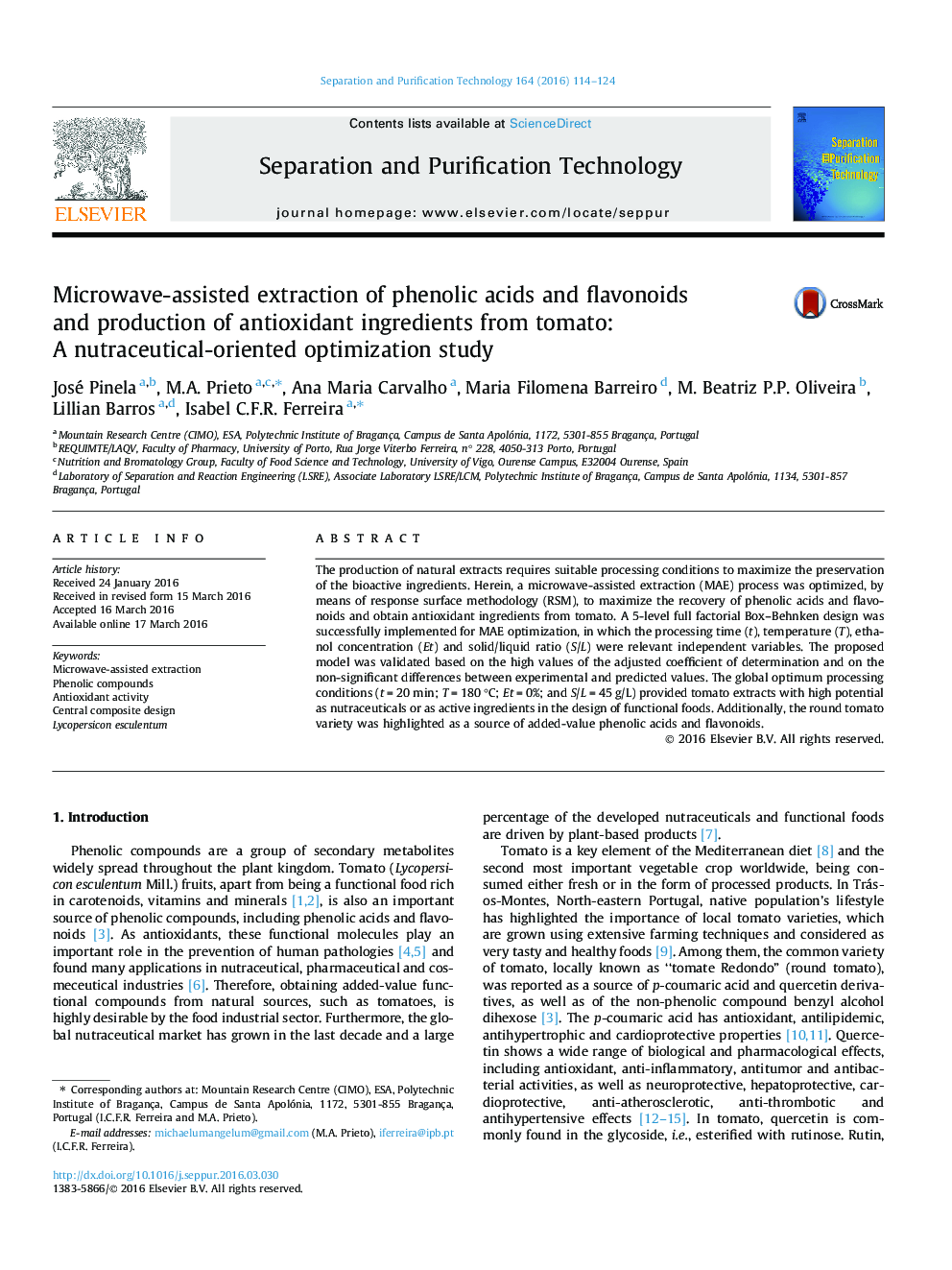| Article ID | Journal | Published Year | Pages | File Type |
|---|---|---|---|---|
| 639921 | Separation and Purification Technology | 2016 | 11 Pages |
•A 5-level full factorial design was successfully implemented for MAE optimization.•Time, temperature, ethanol concentration and solid/liquid ratio were relevant variables.•Antioxidant extracts rich in functional phenolic acids and flavonoids were obtained.•Non-significant differences between experimental and predicted values were found.•Tomato extracts presented potential as ingredients in the design of functional foods.
The production of natural extracts requires suitable processing conditions to maximize the preservation of the bioactive ingredients. Herein, a microwave-assisted extraction (MAE) process was optimized, by means of response surface methodology (RSM), to maximize the recovery of phenolic acids and flavonoids and obtain antioxidant ingredients from tomato. A 5-level full factorial Box–Behnken design was successfully implemented for MAE optimization, in which the processing time (t), temperature (T), ethanol concentration (Et) and solid/liquid ratio (S/L) were relevant independent variables. The proposed model was validated based on the high values of the adjusted coefficient of determination and on the non-significant differences between experimental and predicted values. The global optimum processing conditions (t = 20 min; T = 180 °C; Et = 0%; and S/L = 45 g/L) provided tomato extracts with high potential as nutraceuticals or as active ingredients in the design of functional foods. Additionally, the round tomato variety was highlighted as a source of added-value phenolic acids and flavonoids.
Graphical abstractFigure optionsDownload full-size imageDownload as PowerPoint slide
